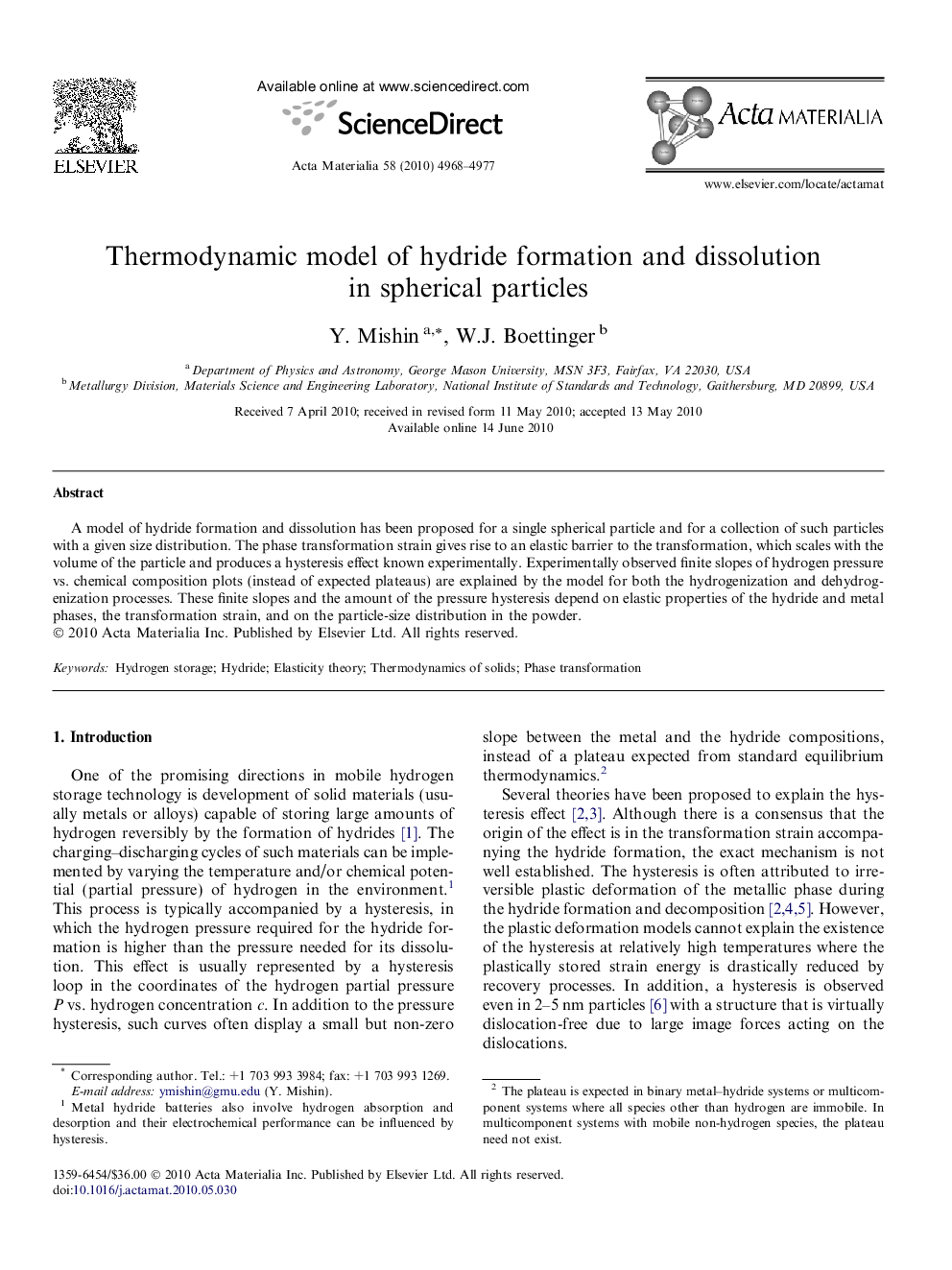| Article ID | Journal | Published Year | Pages | File Type |
|---|---|---|---|---|
| 1448386 | Acta Materialia | 2010 | 10 Pages |
A model of hydride formation and dissolution has been proposed for a single spherical particle and for a collection of such particles with a given size distribution. The phase transformation strain gives rise to an elastic barrier to the transformation, which scales with the volume of the particle and produces a hysteresis effect known experimentally. Experimentally observed finite slopes of hydrogen pressure vs. chemical composition plots (instead of expected plateaus) are explained by the model for both the hydrogenization and dehydrogenization processes. These finite slopes and the amount of the pressure hysteresis depend on elastic properties of the hydride and metal phases, the transformation strain, and on the particle-size distribution in the powder.
